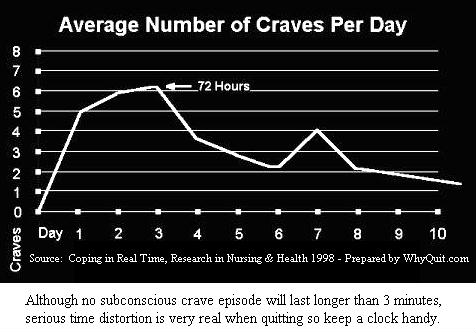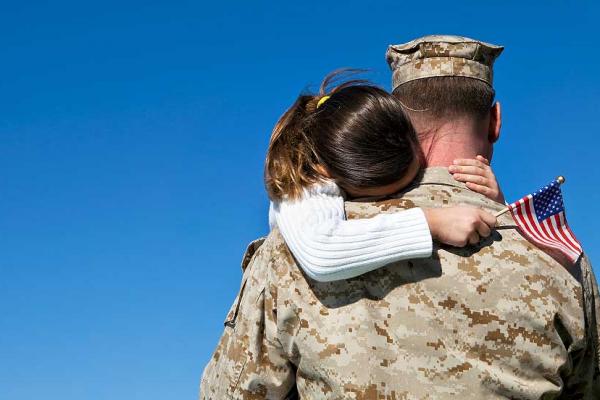Tired of the same old quitting tips? How will you navigate the up to 72 hours
needed to reach peak withdrawal and again reside inside a nicotine free body?
The below cold turkey quitting tips are vastly different from the advice
rendered by those advocating the use of weeks or months of nicotine replacement
products.
1. The Law of Addiction - "Administration of a drug to an addict will
cause re-establishment of chemical dependence upon the addictive substance at
the old level of use or greater." Yes, just one powerful puff of nicotine and
all your hard work is down the drain. Adherence to just one rule guarantees
success to all ... Never Take Another Puff.
Nicotine rewired your brain, growing millions of nicotinic receptors in
eleven different regions. Although your mind's nicotine induced
dopamine/adrenaline intoxication is an alert high, your chemical dependency is
every bit as real and permanent as alcoholism. Treating a true addiction as
though it were some nasty little habit is a recipe for relapse. There is no such
thing as just one puff. Nicotine dependency recovery truly is an all or nothing
proposition.
2. Measuring Victory - Forget about quitting "forever." Like
attempting the seemingly impossible task of eating an entire elephant, it's the
biggest psychological bite imaginable. Instead, work hard at adopting a
realistic and do-able victory yardstick that celebrates freedom an hour,
challenge and day at a time. If you insist on seeing success only in terms of
quitting forever then on which day will you celebrate?
3. Emotional Phases - Chemical dependency upon smoking nicotine is one
of the most intense, repetitive and dependable relationships you've likely ever
known. It has infected almost every aspect of your life and thinking. Be
prepared to experience a normal sense of emotional loss when quitting that
gradually transports you through six very different phases: (1) denial, (2)
anger, (3) bargaining, (4) depression, (5) acceptance, and (6) complacency. This
emotional journey is normal and a necessary part of recovery.
4. Do Not Skip Meals - Each puff of nicotine was your spoon releasing
stored fats and sugars into your bloodstream. It allowed you to skip meals
without experiencing wild blood-sugar swing symptoms such as an inability to
concentrate or hunger related anxieties. Don't add needless symptoms to
withdrawal but instead learn to spread your normal daily calorie intake out more
evenly over the entire day. Don't eat more food but less food more often.
Drink plenty of acidic fruit juice the first three days. Cranberry is
excellent and a bottle will cost you about the same as a pack of cigarettes. It
will help to both accelerate the up to 72 hours needed to remove the alkaloid
nicotine from your body and help stabilize blood sugars. Take care beyond three
days as juices can be rather fattening.
5. Avoid All Crutches - A crutch is any form of quitting reliance that
you lean upon so heavily in supporting recovery that if quickly removed would
likely result in relapse (a person, product, service or activity). If you feel
the need to lean upon a quitting buddy be sure that your buddy is either a
sturdy long-time ex-smoker or a never-smoker.
With the exception of using extreme care with alcohol during early
withdrawal, you do not need to give up any activity when quitting except for
using nicotine. Likewise, successful long-term quitting is not dependent upon
you engaging in any new activity either. Contrary to the junkie-thinking you've
likely fed your mind, everything you did as a smoker you'll soon adjust to doing
as well or better as an ex-smoker.
6. Crave Coping Techniques - You have conditioned your mind to expect
the arrival of nicotine when encountering various times, places, activities,
people, events or emotions. The first time you encounter each crave trigger you
should expect a short yet possibly powerful anxiety episode lasting up to three
minutes.
Don't fear or hide from your triggers but confront and extinguish each of
them. You'll find that most are re-conditioned by a single encounter during
which the subconscious mind does not receive the expected result - nicotine.
Welcome and embrace every episode as each reflects a beautiful moment of
subconscious healing, and the reclaiming of another aspect of your life.


One crave coping technique is to practice slow deep breathing while clearing
your mind of all needless chatter by focusing on your favorite person, place or
thing. Another is to say your ABCs while associating each letter with your
favorite food, person or place. For example, "A" is for grandma's hot apple pie,
and "B" is for ..." It's doubtful you'll ever reach the challenging letter "Q."
7. Cessation Time Distortion - A recent study found that nicotine
cessation causes significant time distortion. Although no subconsciously
triggered crave episode will last longer than three minutes, to a quitter the
minutes can feel like hours. Keep a clock handy to maintain honest perspective.
8. Caffeine/Nicotine Interaction - Amazingly, nicotine somehow doubles
the rate by which the body depletes caffeine. Yes, your blood-serum caffeine
level will double if no caffeine intake reduction is made when quitting.
Although not a problem for most light to moderate caffeine users, consider
cutting caffeine intake by roughly half if troubled by anxieties or experiencing
difficulty relaxing or sleeping.
9. The Smoking Dream - Be prepared for an extremely vivid smoking
dream as tobacco odors released by horizontal healing lungs are swept up
bronchial tubes by rapidly healing cilia and come in contact with a vastly
enhanced sense of smell. See it as the wonderful sign of healing it reflects and
nothing more.
10. Relapse - Remember that there are only two good reasons to take a
puff once you quit. You decide you want to go back to your old level of
consumption until smoking cripples and then kills you, or you decide you really
enjoy withdrawal and you want to make it last forever. As long as neither of
these options appeals to you the solution is as simple as ... no nicotine just
one day at a time, Never Take Another Puff!
The above tips are a sampling of the educational offerings available at WhyQuit.com, the Internet's oldest forum devoted
to the art, science and psychology of cold turkey quitting. A free quitting
resource staffed by volunteer professional cessation educators, WhyQuit carries
the not-for-profit concept to the extreme of actually declining donation offers.


